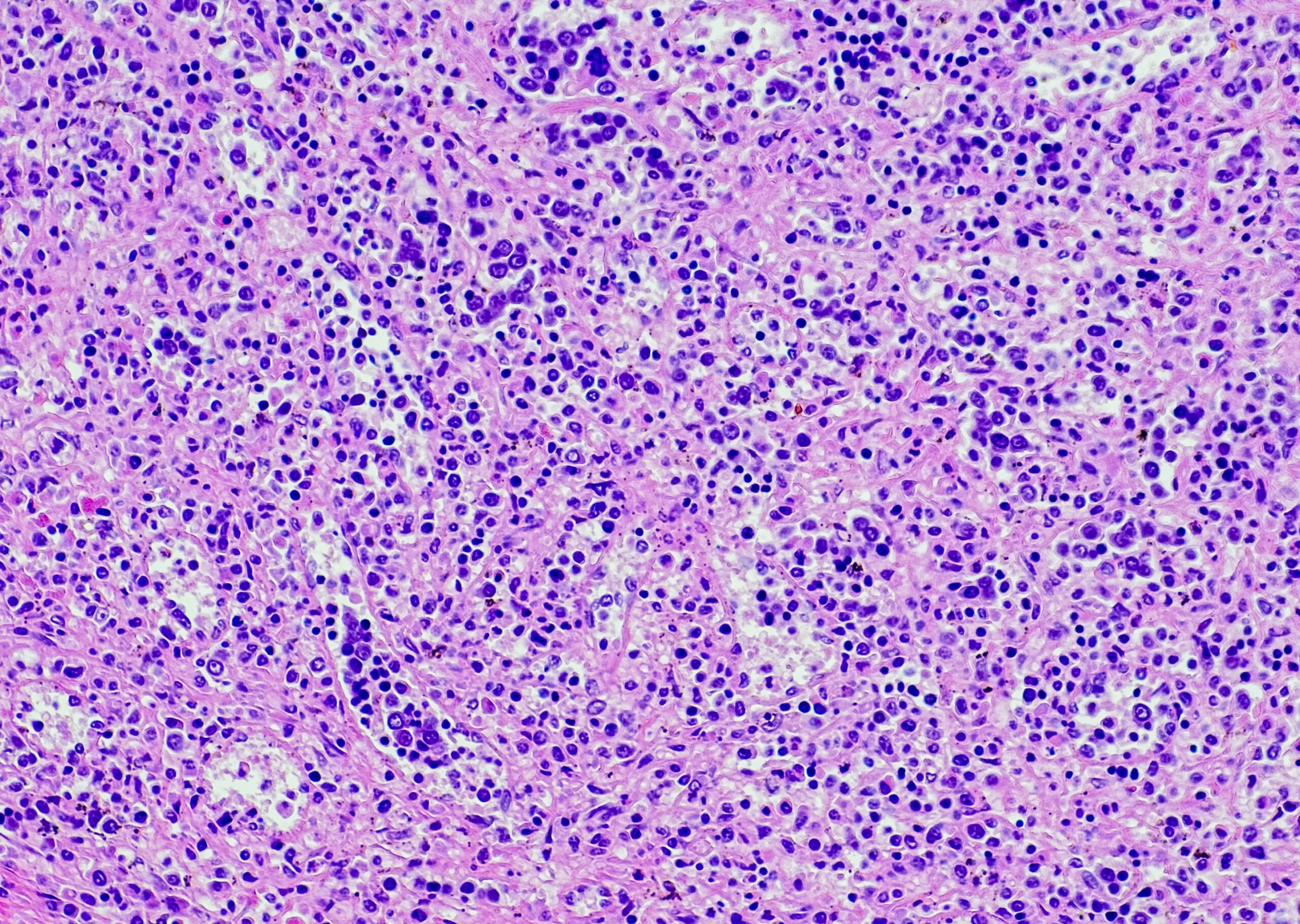The biologic omalizumab has empirically well-documented efficacy and safety and is considered the treatment of choice in international guidelines for cases of chronic spontaneous urticaria with inadequate response to antihistamines. Ligelizumab is currently in advanced phases of clinical development. This monoclonal antibody, which is also directed against IgE, is now being investigated in phase III following promising results from the dose-finding study.
Urticaria is characterized by red, itchy and sometimes painful wheals of the skin and sometimes angioedema. The swelling may also affect the face, neck and mucous membranes. In the chronic form, the symptoms persist for more than 6 weeks. The quality of life can be significantly reduced. In chronic spontaneous urticaria, symptoms appear suddenly without any apparent cause. The former name was “chronic idiopathic urticaria.” The goal of treatment is to achieve symptom control, if possible until complete freedom from symptoms. This should also provide relief from associated symptoms such as depression, anxiety, and sleep disturbances [1]. First-line therapy is second-generation H1 antihistamines such as loratadine, desloratadine, cetirizine, or levocetirizine [2]. If the treatment goals are not achieved after two to four weeks despite dosing up with the standard dose, the use of omalizumab should be considered, to date the only biologic approved for the treatment of chronic spontaneous urticaria. Other monoclonal antibodies are currently in advanced stages of clinical development. Prof. Sarbjit S. Saini, John Hopkins University School of Medicine, Baltimore (USA) reported on recent developments in the field of biologics for this indication at the EADV Annual Meeting [3].
Promising data on ligelizumab
The humanized IgG1 monoclonal antibody ligelizumab, which like omalizumab targets IgE, is currently in phase III testing [13]. In a randomized, double-blind phase IIb dose-finding study, ligelizumab was compared with omalizumab and placebo in 382 patients with moderate-to-severe csU [13]. Of the 382 study participants with chronic spontaneous urticaria, 44% achieved complete lesion clearance (UAS7*=0) after 12 weeks at a dose of 72 mg ligelizumab compared with 25.9% at omalizumab 300 mg and 0% in the placebo group. The single-arm, unblinded extension study continued with ligelizumab (240 mg, q4w) included patients who had active disease after week 32 of the phase IIb dose-finding study (ligelizumab at various doses, omalizumab, or placebo) [4]. In the extension phase, 226 study participants received ligelizumab 240 mg subcutaneously every 4 weeks for a 52-week period with a 48-week follow-up period. At week 12 of the extension study, 46.5% of patients had a complete response, and at week 52, this proportion was 53.1%. Ligelizumab was generally well tolerated, with no new safety signals reported.
* UAS7=Weekly Urticaria Activity Score
|
Summary Ligelizumab was found to be more effective in blocking the IgE/FcεRI pathway than omalizumab in clinical trials, which is attributed to a higher binding affinity for IgE [9]. Phase IIb data indicate that better symptom control can be achieved with ligelizumab in both the parallel group design and in patients who have been switched from omalizumab to ligelizumab. Currently, ligelizumab is being investigated in the PEARL Phase III trial program. Patients with chronic spontaneous urticaria in whom adequate symptom control cannot be achieved by therapy with H1 antihistamines are randomized to ligelizumab, omalizumab, or placebo [10–12]. The primary endpoint is the change in UAS7 (Weekly Urticaria Activity Score) from baseline to week 12. |
Omalizumab currently the only biologic approved
The IgG monoclonal antibody omalizumab (Xolair®) is approved in Switzerland for patients over 12 years of age with chronic spontaneous urticaria who continue to suffer from wheals, angioedema, or pruritus despite H1 antihistamine treatment [5]. By binding to free IgE, omalizumab prevents IgE from binding to the high-affinity FcεRI- receptor. This reduces the amount of free IgE available to trigger the allergic cascade. The recommended dosage of omalizumab is 300 mg as a subcutaneous injection every 4 weeks. A large proportion of urticaria patients experience a significant reduction in symptoms within a short period of time after the first injection, although some patients take longer to achieve therapeutic effects. If there is no therapeutic success after six months of treatment with omalizumab, the guidelines recommend off-label use with ciclosporin A in addition to existing therapy with H1 antihistamines [6]. Acute exacerbations may be treated briefly with oral systemic glucocorticoids to reduce disease duration and activity. Prednisolone is recommended at a dosage of 20-50 mg daily for a maximum of ten days. When used for three to five days, tapering is usually not necessary [7,8].
Congress: EADV Annual Meeting
Literature:
- Maurer M, et al: JDDG 2018; 16(5): 585-595.
- Bauer A, et al: Allergo J Int 2021; 30: 64-75.
- Saini SS: Optimizing patient outcomes in CSU: Could new biologics help achieve this? Prof. Sarbjit S. Saini, MD, EADV Annual Meeting 09/29-02/10/21.
- Maurer M, et al: Sustained safety and efficacy of ligelizumab in patients with chronic spontaneous urticaria: A one-year extension study. Allergy. 2021 Nov 13. doi: 10.1111/all.15175.
- Drug Information, www.swissmedicinfo.ch, (last accessed Nov. 19, 2021).
- Ghazanfar MN, Thomsen SF: J Dermatolog Treat 2019; 30: 387-388.
- Zuberbier T, et al: Allergo Journal 2018; 27: 41-69.
- Termeer C, et al: J Dtsch Dermatol Ges 2015; 13: 419-428.
- Gasser P, et al: Nat Commun 2020; 11(1): 165.
- Maurer M et al. Allergy. 2011; 66(3): 317-330.
- NCT03580356: https://clinicaltrials.gov/ct2/show/NCT03580356
- NCT04210843: https://clinicaltrials.gov/ct2/show/NCT04210843
- Maurer M, et al: N Engl J Med 2019; 381(14): 1321-1332.
DERMATOLOGIE PRAXIS 2021; 31(6): 43 (published 12/4/21, ahead of print).












